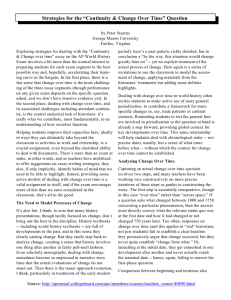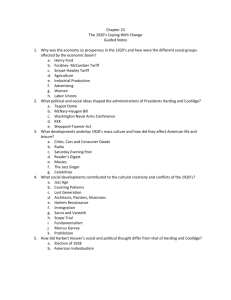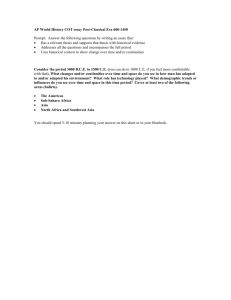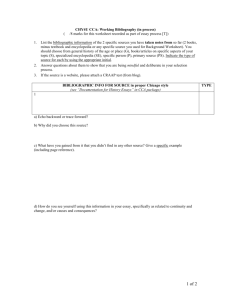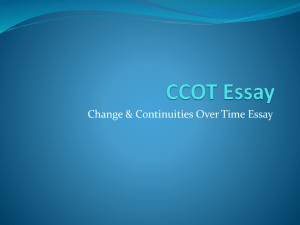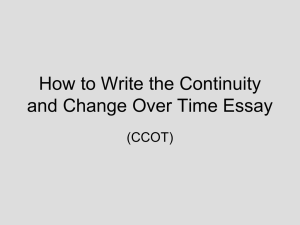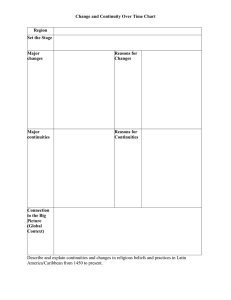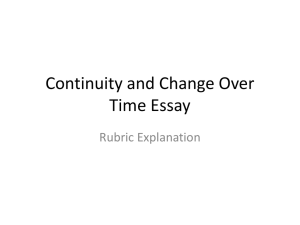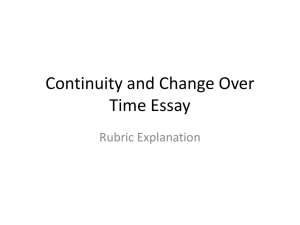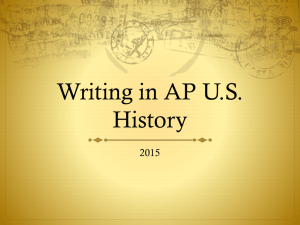CCOT Essay Guide: Continuity & Change Over Time Analysis
advertisement
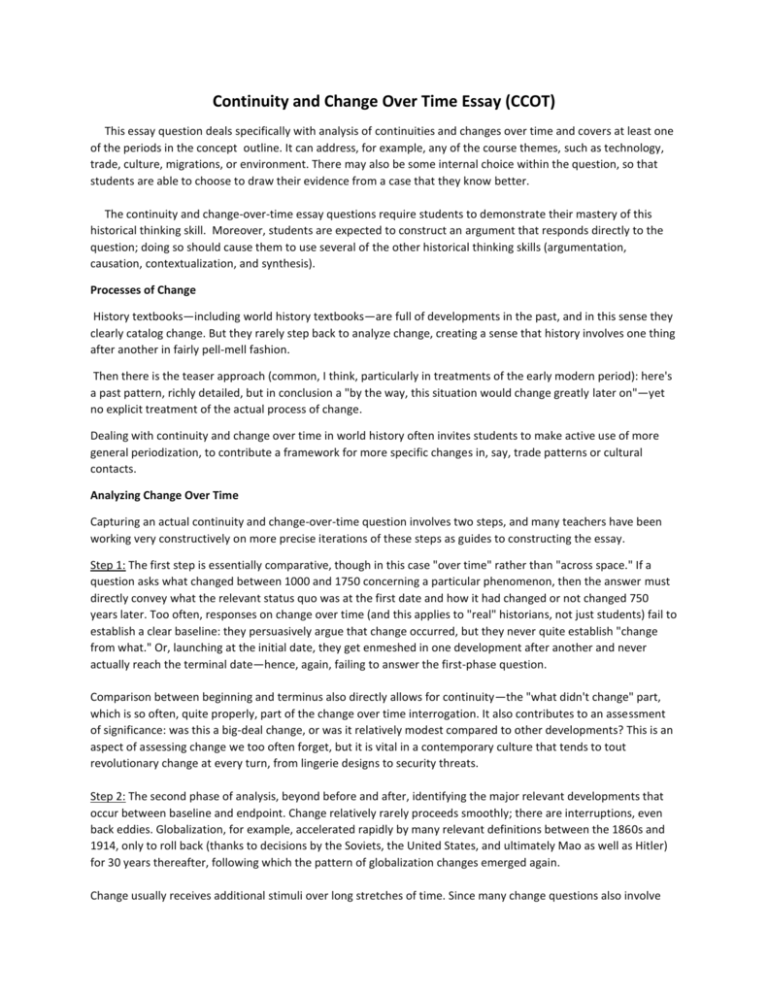
Continuity and Change Over Time Essay (CCOT) This essay question deals specifically with analysis of continuities and changes over time and covers at least one of the periods in the concept outline. It can address, for example, any of the course themes, such as technology, trade, culture, migrations, or environment. There may also be some internal choice within the question, so that students are able to choose to draw their evidence from a case that they know better. The continuity and change-over-time essay questions require students to demonstrate their mastery of this historical thinking skill. Moreover, students are expected to construct an argument that responds directly to the question; doing so should cause them to use several of the other historical thinking skills (argumentation, causation, contextualization, and synthesis). Processes of Change History textbooks—including world history textbooks—are full of developments in the past, and in this sense they clearly catalog change. But they rarely step back to analyze change, creating a sense that history involves one thing after another in fairly pell-mell fashion. Then there is the teaser approach (common, I think, particularly in treatments of the early modern period): here's a past pattern, richly detailed, but in conclusion a "by the way, this situation would change greatly later on"—yet no explicit treatment of the actual process of change. Dealing with continuity and change over time in world history often invites students to make active use of more general periodization, to contribute a framework for more specific changes in, say, trade patterns or cultural contacts. Analyzing Change Over Time Capturing an actual continuity and change-over-time question involves two steps, and many teachers have been working very constructively on more precise iterations of these steps as guides to constructing the essay. Step 1: The first step is essentially comparative, though in this case "over time" rather than "across space." If a question asks what changed between 1000 and 1750 concerning a particular phenomenon, then the answer must directly convey what the relevant status quo was at the first date and how it had changed or not changed 750 years later. Too often, responses on change over time (and this applies to "real" historians, not just students) fail to establish a clear baseline: they persuasively argue that change occurred, but they never quite establish "change from what." Or, launching at the initial date, they get enmeshed in one development after another and never actually reach the terminal date—hence, again, failing to answer the first-phase question. Comparison between beginning and terminus also directly allows for continuity—the "what didn't change" part, which is so often, quite properly, part of the change over time interrogation. It also contributes to an assessment of significance: was this a big-deal change, or was it relatively modest compared to other developments? This is an aspect of assessing change we too often forget, but it is vital in a contemporary culture that tends to tout revolutionary change at every turn, from lingerie designs to security threats. Step 2: The second phase of analysis, beyond before and after, identifying the major relevant developments that occur between baseline and endpoint. Change relatively rarely proceeds smoothly; there are interruptions, even back eddies. Globalization, for example, accelerated rapidly by many relevant definitions between the 1860s and 1914, only to roll back (thanks to decisions by the Soviets, the United States, and ultimately Mao as well as Hitler) for 30 years thereafter, following which the pattern of globalization changes emerged again. Change usually receives additional stimuli over long stretches of time. Since many change questions also involve causation, this is an opportunity to talk about significant intervening factors that may accelerate the change, push it in slightly different directions, delay it for a while, or do all the above. Step 3: WHY!!! What was the reason or driving force behind the change, why did things stay the same Periodization The real point of this second phase of analysis involves internal periodization: take a given topic (international trade patterns 1000-1750), identify baseline and end point, and then talk about the major internal subdivisions (based on new factors), additional directions, and even interruptions. In other words “what was really changing here, and why, and what was persisting” turning descriptive facts into building blocks that permit analysis of change. Prompt: Since the Agricultural Revolution human interaction has changed dramatically; while at the same time essential elements of “what it means to be human” have stayed the same. Analyze the changes and continuities in human interaction, specifically concerning Globalization (this can include cultural diffusion, trade, migration).

